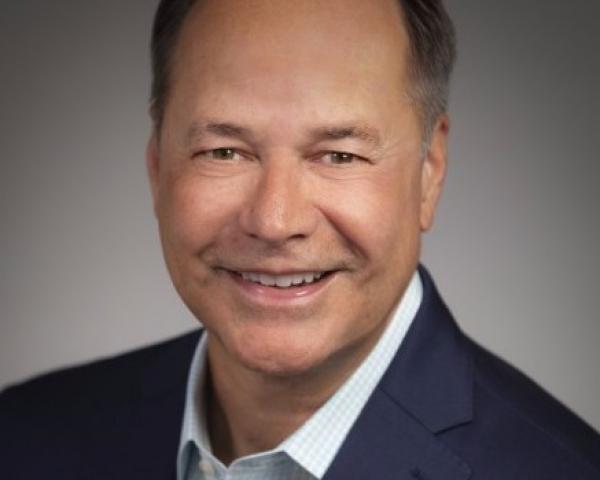The scourge of legal abuse in insurance is hardly new or even recent but rather has been insidiously growing throughout the industry for decades. Referred to today as social inflation, legal abuse's stakes are higher, with no signs of slowing, and so-called tort reform.
Some 86% of Americans agree state and federal lawmakers should address the abuses of the U.S. legal system (see APCIA/MunichRe survey results below). The insurance industry can no longer rely on current strategies and responses to this threat, nor can it continue to absorb and pass along the associated costs to policyholders.
History/Background
The term "social inflation" was coined by Warren Buffett in 1977 in a letter to Berkshire Hathaway stockholders, where he defined it as "a broad definition by society and juries of what is covered by insurance policies." In 2010, reinsurer PartnerRe expanded on the definition in a white paper stating that social inflation is the increase in insurance losses caused by:
- Higher jury awards
- More liberal treatment of claims by workers' compensation boards
- Increased use of social media
- Increasing attorney involvement in claims
- Social developments that influence jury members and lead to very high jury awards
- Widespread distrust of large corporations
- Widening of income disparities
See also: A Tipping Point for P&C Litigation
Today
Today’s operating environment has become even more challenging for carriers. Having seen record rate increases in 2022 and 2023, consumers and regulators have begun to push back. Putting further pressure on growth and profitability, a growing number of insurers have suspended auto and property policy renewals in unprofitable jurisdictions and in some cases withdrawn from the market completely until rates become more attractive.
As multi-line carriers emerge from the shadow of general cost inflation and hold their breath for the predicted more active 2024 hurricane season, the longer tail of liability claims looms like a dark cloud. Reserve accuracy comes into question with the long-tail effect in mind. For instance, fear of adverse trial decisions tends to pressure settlements upward and is just one of social inflation’s tentacles. Jury verdicts of $10 million and more, known as ‘nuclear verdicts,” as well as higher plaintiff awards in general, can cause insurers to settle cases more frequently and at higher settlement amounts than previously, distorting both reserving and loss payment patterns.
According to an AM Best special report — ‘Social Inflation Remains a Thorn in the Side of Casualty Insurers’ — the lines of business most affected by social inflation are commercial auto, professional liability, product liability and directors’ and officers’ liability insurance.
Litigation/Funding
In addition to the cumulative economic challenges presented by all the foregoing, along came “litigation funding” around 2015. Litigation funding (also known as legal financing) is the mechanism or process through which litigants can finance their litigation or other legal costs through a third-party funding company in exchange for a sizeable portion of any award or settlement.
Litigation funding has encouraged litigation and larger awards that may otherwise have not been viable. A recent RAND research report reveals:
- a 10% increase in the annual number of new court filings per capita between 2012 and 2019 in 19 states.
- that 64% of cases reached a verdict in favor of the plaintiff in 2019, up from 53% in 2010.
In recent years, litigation funding has experienced explosive growth and is now a multibillion-dollar industry worldwide, with an estimated $15.2 billion in commercial litigation investments in the U.S. alone. There are dozens of funding firms operating globally, both public and private, some backed by private equity investors. The global litigation funding market was valued at $18.2 billion in 2022 and is expected to grow at a compound annual growth rate (CAGR) of 13% through 2028.
Only four states have litigation funding laws (Wisconsin, West Virginia, Indiana and Montana).
In March 2024, the American Property Casualty Insurance Association (APCIA) and Munich Reinsurance America, (Munich Re US) released survey results conducted by the Harris Poll among more than 2,000 U.S. adults. The results revealed that a majority of Americans are not aware of the negative impact plaintiff lawyers’ tactics, including predatory advertising and the use of third party litigation funding, have on their household costs via the “tort tax,” whether or not the household is involved in civil litigation.
The survey also found that many Americans are not aware that the plaintiff lawyer keeps a high percentage of a settlement or jury award and that a large amount may go to third party investors who have no relationship to the claimant, other than to profit from their misfortune. 86% of Americans agree state and federal lawmakers should address the abuses of the U.S. legal system.
Attorney Involvement
Plaintiff attorney firms specializing in personal injury cases are expanding nationally and recruiting clients through aggressive advertising budgets. Morgan & Morgan is the largest such law firm in the country, with a network of over 1,000 attorneys and offices in every state. Last year, trial lawyers spent more than $2.4 billion on local TV, print, billboard and radio ads across the U.S. Claimants are bombarded with attorney marketing letters shortly after even a minor accident. After all, plaintiff attorneys have major incentives by commanding some 30% to 50% of the settlement amounts.
The degree of attorney representation rates in claims is a key metric of average claim settlement amounts. Higher rates of attorney use drive up claim costs in several ways, including lengthier claim cycle time, greater legal defense costs and ultimately higher settlement amounts. These cases also tend to focus consumer awareness on the potential rewards from litigation against insurers, fanning the flames.
In a 2023 research survey, LexisNexis Risk Solutions found that of auto insurance claimants who hired an attorney, 57% decided to do so before submitting the claim, and 71% said the attorney encouraged them to seek additional treatment.
A study by Sedgwick found that of litigated commercial auto claims, 55% have attorney involvement before, or the same day as, the report to carrier date. This measure was at 43% only four years ago. Meanwhile, 67% of litigated claims have attorneys involved within the first 14 days of being reported.
See also: Litigation Risks in 2024 and Beyond
Industry Response
Considering the combined effect of all of these challenges, carriers can no longer afford to stand by as their profitability is eroded and the business becomes untenable. Rising rates of litigation, jury awards and claims severity are contributing to higher liability costs. All of which are passed on to consumers and businesses through premiums.
A complex interplay of factors underscores the need for further research to isolate social inflation from other contributing elements. Although the insurance industry has spearheaded tort reform laws in several states, any organized industry pushback against litigation abuse remains disproportionate by a wide margin.
But not all industry leaders agree on the most effective strategies to combat it. Evan Greenberg, chair and chief executive officer of Chubb, explained that social attitudes pitting the little guy against big U.S. corporations are a key driver of the spiraling costs of jury verdicts. “We are not the sympathetic face to show” to change those attitudes, Greenberg said of insurers during the S&P Global Ratings 40th Annual Insurance Conference. The corporations, he said, are now motivated to lead battles that will be waged state by state and county by county, noting that a social inflation fix will not be found at the federal level.
Looking Ahead: Call to Action
The insurance industry can no longer rely solely on current strategies and responses to this threat, nor can it continue to absorb and pass along the associated costs to policyholders. Tort reform is slow and arduous and ineffective in addressing today’s trends.
We suspect that more carriers will take the lead and begin to deploy new, comprehensive short-term strategies to combat social inflation head-on. Such efforts will likely include actions designed to push back on the plaintiff bar in problematic jurisdictions; avoid litigation from the onset, bolster legal defenses altogether and perhaps take more risk via trials.
Insurance industry associations, including the APCIA, will play a key role facilitating exchanges of information among carriers wishing to adopt best practices while broadly supporting legal tort reform in an effort to ensure the long-term health and viability of the industry.
There is no better time to start than right now.









